Have you checked your website’s protection against DDoS attacks recently? If not, you could be in for a rude awakening. Distributed denial-of-service attacks are on the rise, and cybercriminals are using more sophisticated methods to take down websites and disrupt operations. You need to make DDoS protection a priority to keep your site up and running.
In 2024, you can’t afford to be caught unprepared. DDoS attacks are cheap and easy to launch, and they’re being used as a weapon to extort money from businesses. When your website gets hit, you’ll lose revenue, damage your reputation, and compromise customer trust. The costs of downtime add up fast. The good news is DDoS protection doesn’t have to be complicated or expensive. By implementing a few essential strategies, you can strengthen your website’s resilience and thwart most attacks. In this article, we’ll explore practical steps you can take now to safeguard your online presence in the year ahead. The future of your website depends on the decisions you make today. Don’t leave it vulnerable – get ready to fight DDOS.
Understanding DDoS Attacks and Their Impact
A distributed denial of service (DDoS) attack aims to disrupt your website by flooding it with traffic from multiple sources. These malicious attacks can have a major impact on your business.
DDoS assaults typically involve a network of infected devices, known as a botnet, directed at your site. The botnet overwhelms your servers with requests, making your website inaccessible to legitimate users.
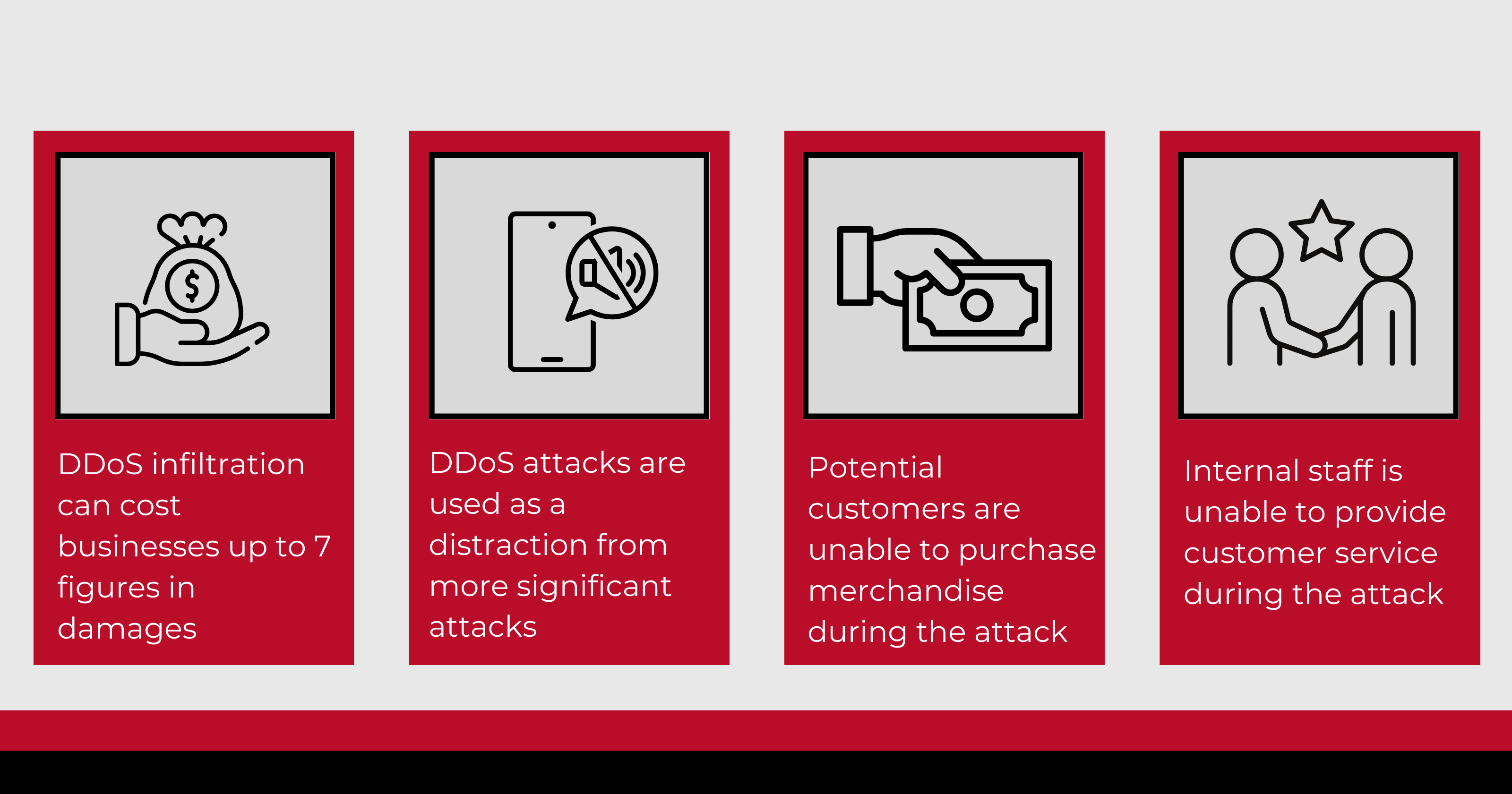
There are a few common types of DDoS attacks to be aware of:
01. Volumetric attacks: Huge amounts of traffic overwhelm your bandwidth and infrastructure. These are the most common DDoS attacks.
02. TCP SYN flood: Exploits a weakness in the TCP connection sequence to consume server resources.
03. Application layer attack: Bots target a specific web application by sending crafted requests to consume server resources.
04. Low and slow attack: Sends high volumes of legitimate-looking traffic at a slow enough rate to avoid detection. This can go on for weeks, slowly building up and disrupting your services.
The impact of DDoS assaults can be catastrophic. They can take your website offline, degrade performance, and damage your reputation and revenue. According to studies, the average DDoS attack in 2024 can cost enterprises over $100,000 per hour in lost sales and productivity.
By understanding the types of DDoS threats, their impacts, and having robust protection in place, you can help ensure your website’s resilience in the face of these damaging attacks.. With a comprehensive DDoS mitigation strategy, including both prevention and mitigation techniques, you can defend your digital assets against the DDoS attacks of tomorrow.
Why DDoS Protection Is Crucial for Website Resilience
In 2024, no website can afford to ignore the threat of DDoS attacks. Distributed denial of service attacks flood your servers with traffic to disrupt access to your website and crash it. If you want to ensure website resilience and keep your site running even under attack, DDoS protection is absolutely essential.

DDoS assaults are increasing in frequency and scale, with some exceeding 1 terabit per second. Without robust DDoS mitigation in place, these enormous volumes of malicious traffic can overload your servers and network infrastructure, causing your website to slow down or go completely offline. The impacts are huge, from lost revenue and customers to damage to your brand’s reputation and credibility.
A multi-layered defense is key
The most effective DDoS prevention utilizes a multi-layered strategy across your network. This means:
01. Install border protection at the edge of your network to filter DDoS traffic.
02. Use cloud-based scrubbing services to divert and inspect attack traffic before it hits your servers.
03. Employ an on-premise DDoS mitigation appliance as another line of defense.
04. Have a DDoS response plan ready in case an attack breaks through initial defenses. This plan should outline specific actions to block malicious traffic and restore website access as quickly as possible.
With proactive DDoS safeguards and a rapid response strategy in place, you can strengthen your website’s resilience against the DDoS threats of today and tomorrow. Continuous monitoring and regular testing of your DDoS protections are also important to ensure maximum defense and minimal disruption in the event of an attack. Website stability depends on it.
Key Types of DDoS Attacks to Protect Against
DDoS attacks aim to overwhelm your website with bogus traffic, crashing your servers and disrupting access. As cyber threats become more advanced, DDoS protection is crucial. Be prepared for these three common attack types:
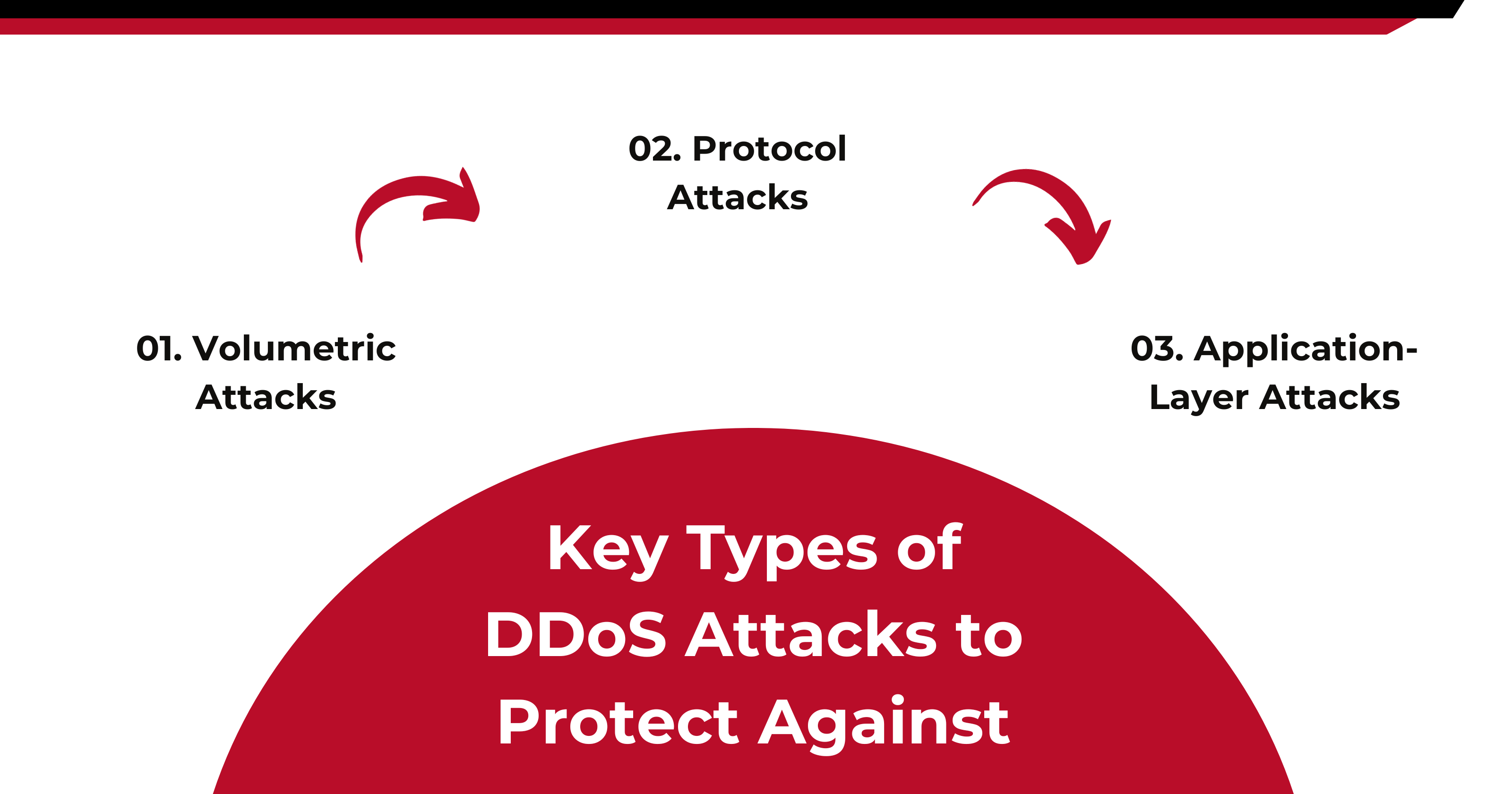
01. Volumetric Attacks
Volumetric DDoS assaults flood your site with a high volume of packets or requests, consuming bandwidth and resources. They utilize botnets, compromised devices that attackers control remotely, to generate massive amounts of traffic. To defend against these brute force attacks, use a robust DDoS mitigation service that can quickly detect and filter out bad traffic before it reaches your servers.
02. Protocol Attacks
Protocol DDoS attacks target vulnerabilities in network infrastructure and protocols like DNS or BGP to take websites offline. For example, attackers may send manipulated DNS queries to DNS servers to disrupt name resolution, preventing users from accessing your site. Work with your hosting provider and internet service provider to ensure all network protocols are up-to-date and properly configured. They can also help filter suspicious protocol traffic.
03. Application-Layer Attacks
Application-layer DDoS attacks target website applications and software, flooding servers with application-specific requests. They attempt to deplete resources like CPU, memory, and database connections. Use a web application firewall to analyze requests and block those that match known attack patterns. Rate limiting can also help reduce the impact of these assaults by capping the number of requests from any single IP address.
With threats constantly evolving, a multi-layered defense is key. Monitor your infrastructure and traffic closely, keep systems patched and up-to-date, use Al and machine learning for attack detection, and work with knowledgeable service providers for targeted DDoS protection and mitigation strategies. By anticipating these malicious exploits before they happen, you’ll be in a much better position to maintain website resilience and keep your business running smoothly.
Implementing Layered DDoS Mitigation Strategies
To effectively protect your website from DDoS attacks in 2024 and beyond, implementing a multi-layered defense strategy is key. Relying on just one solution or vendor will leave you vulnerable. Here are some of the layers you should put in Place:
01. A cloud-based web application firewall (WAF) can help filter out malicious traffic and DDoS attacks at the application layer (Layer 7). Look for a WAF with Al and machine learning capabilities, as these will be better equipped to detect and mitigate new attack vectors. providers offer DDoS mitigation as an add-on service.
02. At the network layer (Layers 3 and 4), use a DDoS mitigation service to scrub incoming traffic and filter out attack traffic. Route all your website traffic through the service, which will inspect each request and pass through only legitimate traffic. These services use algorithms and huge amounts of network capacity to withstand even the largest DDoS attacks.

03. For an additional layer of protection at the perimeter (Layer 1), use a content delivery network (CDN) to distribute your website globally. The CDN will absorb the impact of attacks and continue serving content. Look for a CDN provider focused on DDoS mitigation and protection.
04. On your local network (Layer 2), ensure your routers and switches are configured to detect and mitigate DDoS activity. Enable techniques like access control lists, rate limiting, and traffic shaping to filter out anomalous traffic. Regularly patch your network devices to the latest firmware to minimize vulnerabilities.
No single solution can fully protect you from today’s complex, multi-vector DDoS attacks. By implementing WAFS, DDoS mitigation services, CDNs with DDOS protection, and secure network configurations, you’ll have a resilient defense that can withstand the DDoS attacks of the future and keep your website online. Staying on top of the latest threats and re-evaluating your strategy annually is key to success.
Choosing the Right DDoS Protection Service Provider
Choosing a dedicated DDoS protection service provider is crucial. Prahost specializes in keeping websites online and shielding servers from crippling DDoS attacks. Some things to consider when evaluating providers:
01. Experience and expertise
Look for a provider with years of experience protecting websites from DDoS attacks. They should have expert staff monitoring networks 24/7 and be able to mitigate sophisticated multi-vector attacks. Ask about their methods and technology for detecting and filtering DDoS traffic.
02. Custom solutions
Your website and business goals are unique. Choose a provider that offers customized DDoS protection solutions, rather than a one-size-fits-all approach. They should evaluate your website, infrastructure, and risk profile to design a tailored solution.
03. Flexibility
DDoS attacks are constantly evolving, so your protection must adapt. Select a provider with a flexible, scalable platform that incorporates the latest DDoS prevention technologies. They should upgrade services frequently and have plans to expand mitigation capacity on-demand during large-scale attacks.
04. Reliability
Downtime means lost revenue, damaged reputation and reduced customer trust. Pick a provider with a proven track record of keeping websites online and mitigating DDoS attacks quickly. Ask about their service level agreements which guarantee certain levels of website availability and attack mitigation response times.
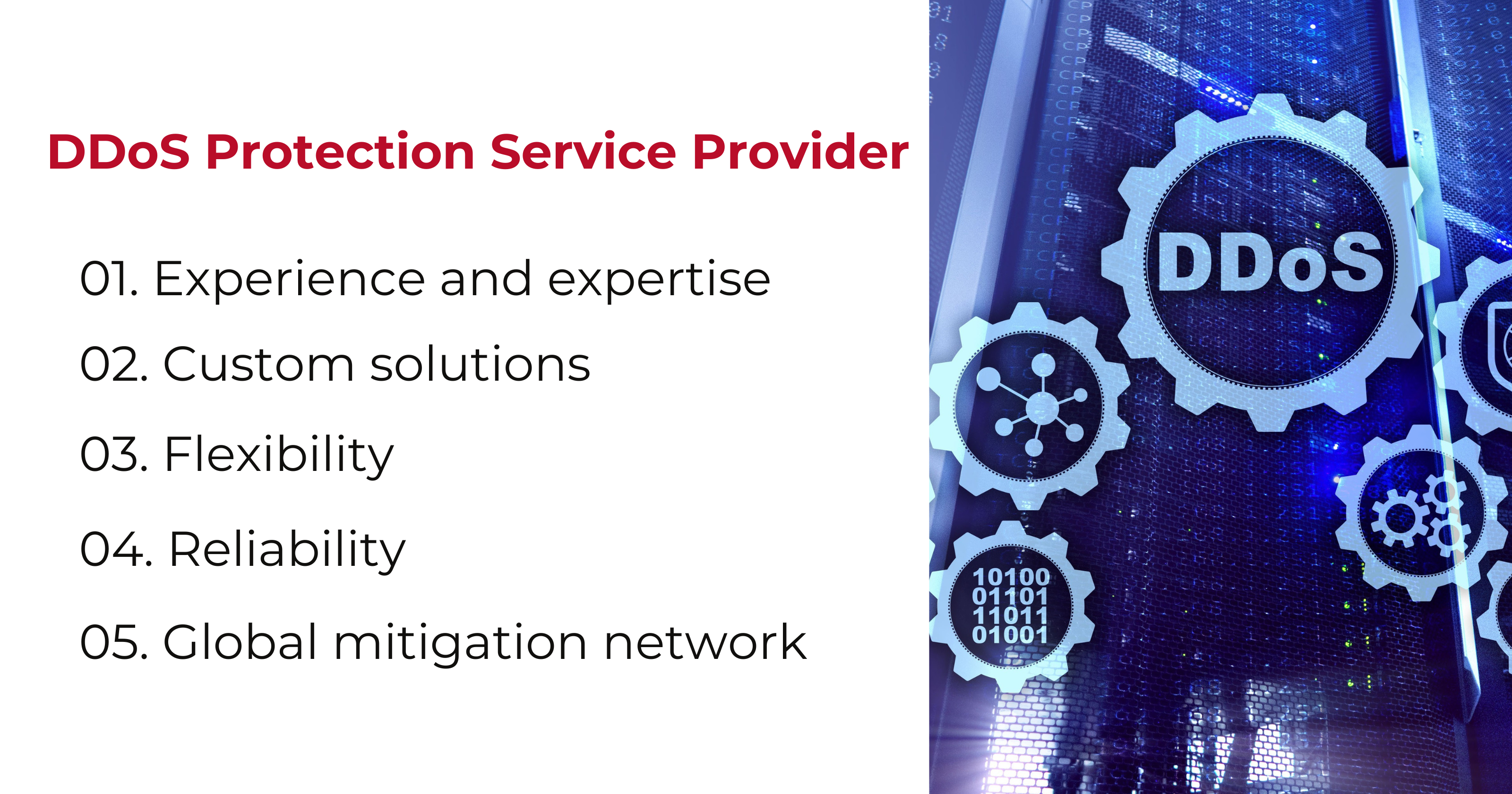
05. Global mitigation network
Choose a provider with mitigation centers located in multiple regions around the world. A global network helps identify and filter DDoS traffic closer to the source, ensuring fast and comprehensive protection no matter where attacks originate.
06. Affordability
DDoS protection services range from a few hundred to several thousand dollars per month. Select a provider that offers plans suiting your needs and budget. Some offer basic services for startups and small businesses, with options to upgrade as your website grows.
07. Additional services
Consider providers offering related website security services like web application firewalls, vulnerability assessments and remediation. Bundled services from a single provider can save you time and money while strengthening security. With the right DDoS protection partner helping shield your website, you can focus on your business knowing that your online presence and customer experience will remain resilient in the face of cyber threats. Choose wisely!
Optimizing Your Infrastructure for DDoS Resilience
To optimize your infrastructure for DDoS resilience in 2024, focus on these key strategies:
01. Distributed Infrastructure.
Having a distributed infrastructure across multiple data centers or cloud regions helps ensure maximum uptime. If one location goes down due to a DDoS attack, the others can handle the traffic. Using a content delivery network (CDN) also distributes your content globally so no single server bears the brunt of an attack.
02. Advanced DDoS Mitigation
Invest in an advanced DDoS mitigation service that uses the latest techniques like anomaly-based detection and machine learning to identify sophisticated attacks. These services can detect and block DDoS attacks in real time before they impact your website. They also provide proactive monitoring and alerting so you know about attacks as soon as they start.
03. Oversized Bandwidth
Make sure you have significantly more bandwidth than you need for normal operations. This gives you overhead to handle unexpected surges in traffic from DDoS attacks. Work with your hosting provider or Internet service provider to determine the right bandwidth for your needs and future growth.
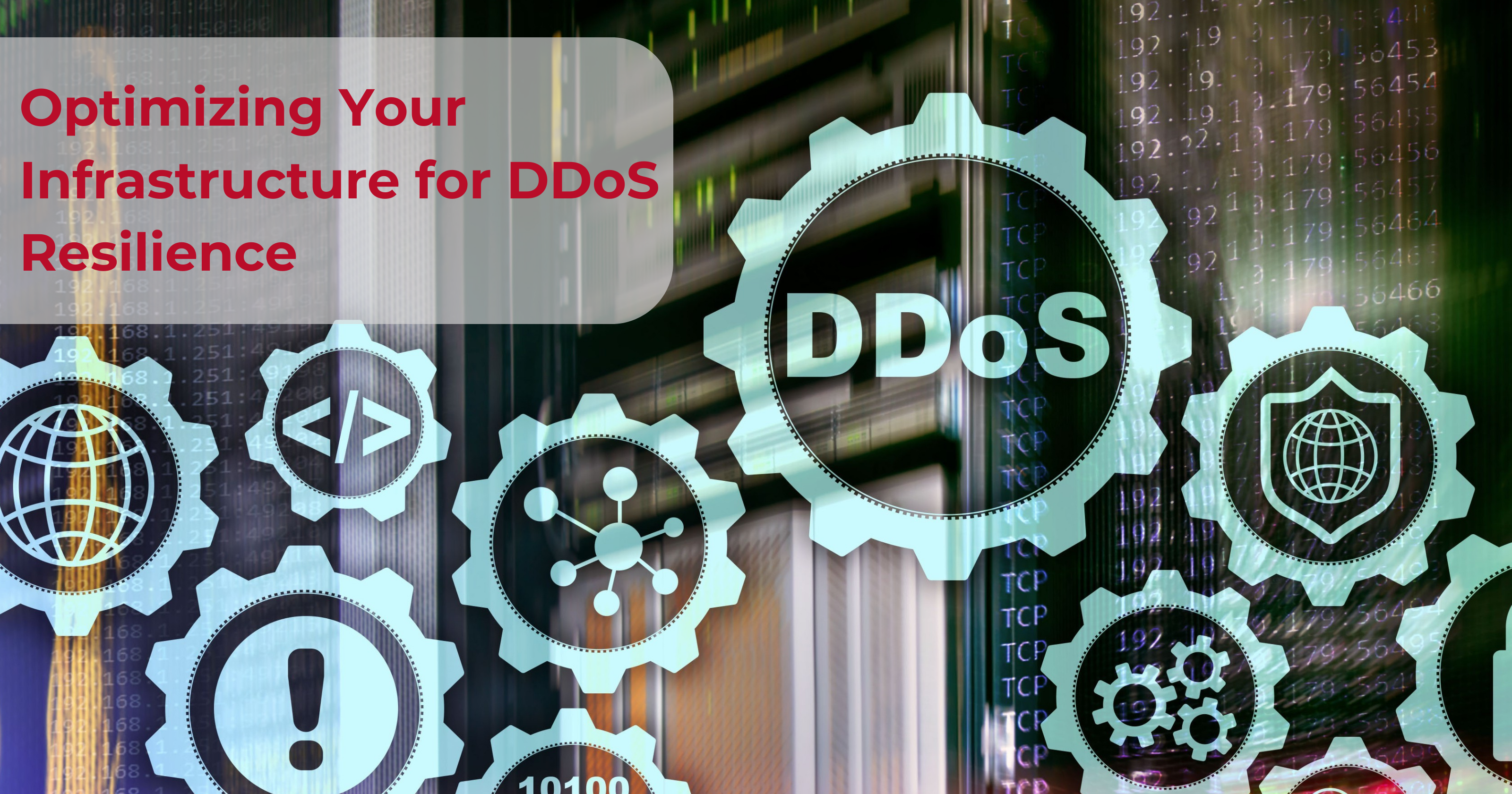
04. Failover Routing
Implement failover routing, also known as backup routing. This allows your network to reroute traffic to backup routes if the primary routes go down. Failover routing ensures users can still access your website even if parts of your network infrastructure are unreachable due to a DDoS attack.
05. Regular Testing
Conduct regular DDoS attack simulations and mitigation tests. This helps identify any weaknesses in your infrastructure and processes before a real attack occurs. Make improvements based on the test results to strengthen your DDOS defenses over time through an iterative process. Testing also ensures your team knows how to properly respond in the event of an actual DDoS attack.
Following these essential strategies will help ensure your website remains resilient in the face of DDoS attacks and other threats. Continuous monitoring and improvement of your defenses are key to staying ahead of the evolving DDoS landscape. With the right precautions in place, you can feel confident your website will remain online and available to customers even under attack.
Leveraging DDOS Mitigation Services for Enhanced Protection
Leveraging DDoS mitigation services can provide an additional layer of protection for your website. These services utilize specialized technologies and expertise to detect and filter DDoS traffic before it impacts your servers.
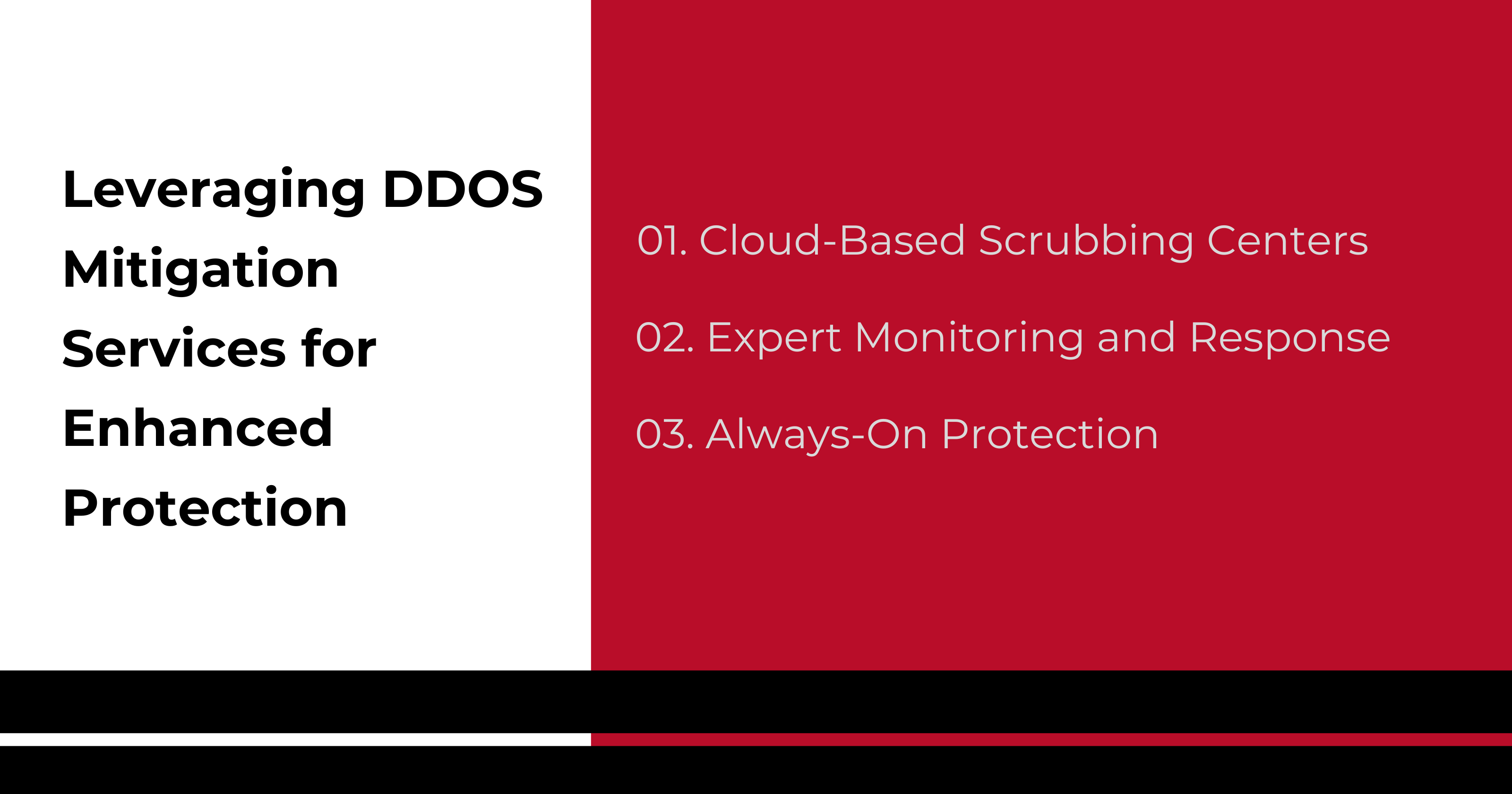
01. Cloud-Based Scrubbing Centers
Cloud-based DDoS mitigation services divert traffic to scrubbing centers for filtering before sending legitimate traffic on to your website. These scrubbing centers utilize powerful cloud infrastructures to handle the volume and complexity of DDoS attacks. They also employ intelligent detection and mitigation techniques, like anomaly detection and pattern recognition. Legitimate traffic is forwarded to your website with minimal latency while attack traffic is dropped.
02. Expert Monitoring and Response
DDoS mitigation services provide 24/7 monitoring and response from experienced security professionals. They can quickly detect an attack, identify the type and source, and implement effective countermeasures to block it before your website experiences disruption. They also continually tweak and optimize mitigation rules based on the latest threats and attack trends.
03. Always-On Protection
Unlike on-premise DDoS solutions which require equipment installation and management, DDoS mitigation services provide always-on protection with no hardware to deploy or software to maintain. They seamlessly integrate with your existing infrastructure and can scale instantly to handle attacks of any size. Protection is provided at the network edge, so no changes are required to your web servers or applications.
While DDoS mitigation services do come at a cost, the potential losses from a successful attack can be far greater. For websites where high availability and uptime are critical, leveraging a dedicated DDoS mitigation service helps ensure your digital assets remain online and secure from the latest generation of attacks. Continuous monitoring, instant scalability, and specialized mitigation technologies work together to provide enhanced DDoS protection for your website.
Developing an Incident Response Plan for DDoS Attacks
Once a DDoS attack is underway, time is of the essence. An incident response plan helps ensure your team can react quickly and effectively to mitigate the damage. Developing a comprehensive plan in advance is key to website resilience.
01. Identify key stakeholders
Determine who needs to be involved in the response process, such as network administrators, security teams, public relations specialists, and executive leadership. Assign roles and responsibilities to each stakeholder.
02. Establish monitoring and detection methods
Choose tools and techniques to actively monitor traffic and detect DDoS events. Set thresholds to trigger alerts when abnormal traffic levels are detected. The faster an attack is detected, the quicker your response can be.
03. Outline response procedures
Once an attack is detected, your team should follow predetermined steps to mitigate the threat. Procedures may include rerouting or blocking malicious traffic, increasing bandwidth, notifying service providers, and shutting down unnecessary services. Response checklists ensure no step is missed during the pressure of an actual incident.
04. Determine lines of communication
Designate points of contact with service providers and establish lines of communication between stakeholders. Prepare templates for status updates and notifications to efficiently communicate with both internal teams and external contacts during an attack.
05. Conduct training and simulations
Educate staff in their roles and responsibilities through ongoing training. Conduct tabletop simulations of DDoS scenarios to practice response procedures in a controlled setting. Look for areas of improvement and update plans.
06. Review and revise
Review your DDoS response strategy and incident response plan at least annually to account for changes in technology, staffing, and lessons learned from recent events. Get feedback from key stakeholders and make revisions to strengthen your overall preparedness. With practice and continuous improvement, your organization can withstand the impact of DDoS assaults.
An incident response plan may not prevent DDoS attacks altogether, but it will help minimize the impact when one strikes. With a combination of preparation, monitoring, and quick action, you can keep your website running even under the stress of an attack. Staying on top of the latest DDoS protection strategies and continuously improving your plan will help ensure website resilience for years to come.
Monitoring and Analyzing DDOS Threat Intelligence
To effectively monitor and analyze DDoS threats, you’ll want to stay on top of the latest intelligence. DDoS attacks are constantly evolving, so what worked to mitigate attacks last year may not work today.
01. Monitor threat reports
Regularly check reports from DDoS monitoring and threat intelligence services. They track new attack methods, tools, and targets so you can anticipate how your website may be targeted. Some well-known services include Akamai, Cloudflare, Imperva, and Kaspersky. Review their latest published reports to determine if any new threats could impact your website.
02. Analyze attack traffic
Closely analyze any attack traffic that makes it to your website. Look for patterns in things like attack sources, types of attacks, targeted pages, frequency, etc. See if the characteristics match any known DDoS tools or botnets. This can help determine the intent and impact, as well as the appropriate mitigation techniques. Work with your DDoS mitigation service or hosting provider to analyze attack traffic and logs.
03. Stay up-to-date on DDoS tools and botnets
DDOS tools and botnets are constantly being updated to evade detection maximize disruption. Familiarize yourself with the latest iterations of tools like Mirai, UDP Flood, and HTTP Flood. Monitor tech news sources and DDoS reports to learn about new tools, updated tools, and how they work. Knowing the enemy will help you defend against them.
04. Join info-sharing communities
Participate in information-sharing communities like the Anti-DDoS Working Group. Members share data on recent attacks, new threats, and successful mitigation techniques. By collaborating with other website owners and security experts, you’ll gain valuable insights to help strengthen your DDoS defenses. Just be sure to also protect any sensitive data about your own website or security setup.
Staying up-to-date with the latest DDoS threats and collaborating with others in your industry are two of the best ways to ensure your website’s resilience against these attacks. DDoS protection is an ongoing battle, but with continuous monitoring and analysis you’ll be well equipped to defend your website.
Conclusion
So there you have it, some of the key strategies you need to put in place to ensure your website is resilient in the face of DDoS attacks in 2024. Technology will continue advancing, attacks will get more sophisticated, but with the right planning and tools, your site can stay online. You owe it to your business and customers to take website protection seriously. Don’t wait until you’re under attack to figure out a strategy. Be proactive, do your research, work with experts if needed. Your website is too important to leave vulnerable. Take action today to strengthen your DDOS defenses so you can sleep easier at night knowing your site will be there when people need it. The future is hard to predict but with the right planning, your website will be ready for whatever comes its way.

